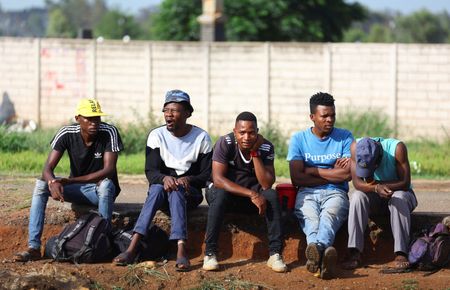JOHANNESBURG (Reuters) – The South African rand on Friday was set to end the week mostly unchanged but a bit firmer than the previous day, as stronger commodity prices cushioned the fall of the local currency against a strengthening dollar.
At 1550 GMT, the rand was up 0.66% against the dollar to trade at 14.6439.
The prospect of a more aggressive pace of U.S. Federal Reserve interest rates hikes supported the dollar with the U.S. dollar index advancing to 100 for the first time in nearly two years.
The greenback has gained ground against a basket of six currencies over the past month, particularly versus the euro, which has been pressured by investor concerns about the economic costs of war in Ukraine and a presidential election in France.
The dollar index rose as high as 100.19, its highest since May 2020. It was last up 0.2% at 100.01.
The rand, like any other riskier asset, falls when investors rush to safe-haven dollar during times of uncertain economic outlook. But with South Africa being a resource-driven country, rising prices of commodities often lend support to the local currency in hopes that the economy would do well.
In fixed income, the yield on the benchmark 2030 government bond was up 4 basis points to 9.595%.
The Johannesburg Stock Exchange (JSE), which was on a losing streak since Monday, reversed some of the losses on Friday backed by mining companies but still ended the week lower than its last week’s close.
The FTSE/JSE benchmark all-share index closed up 1.04% at 74,776 points and the blue-chip index of top 40 companies ended up 1.11% at 67,747 points.
Analysts have said that in the absence of any major local economic triggers, the market is largely dependent on global market performances and commodity prices.
Most major global indexes were up on Friday and the local mining index also gained 3.76%, backed by a rise in gold and platinum group metal prices.
(Reporting by Olivia Kumwenda-Mtambo and Promit Mukherjee; Editing by Frank Jack Daniel and Shailesh Kuber)











